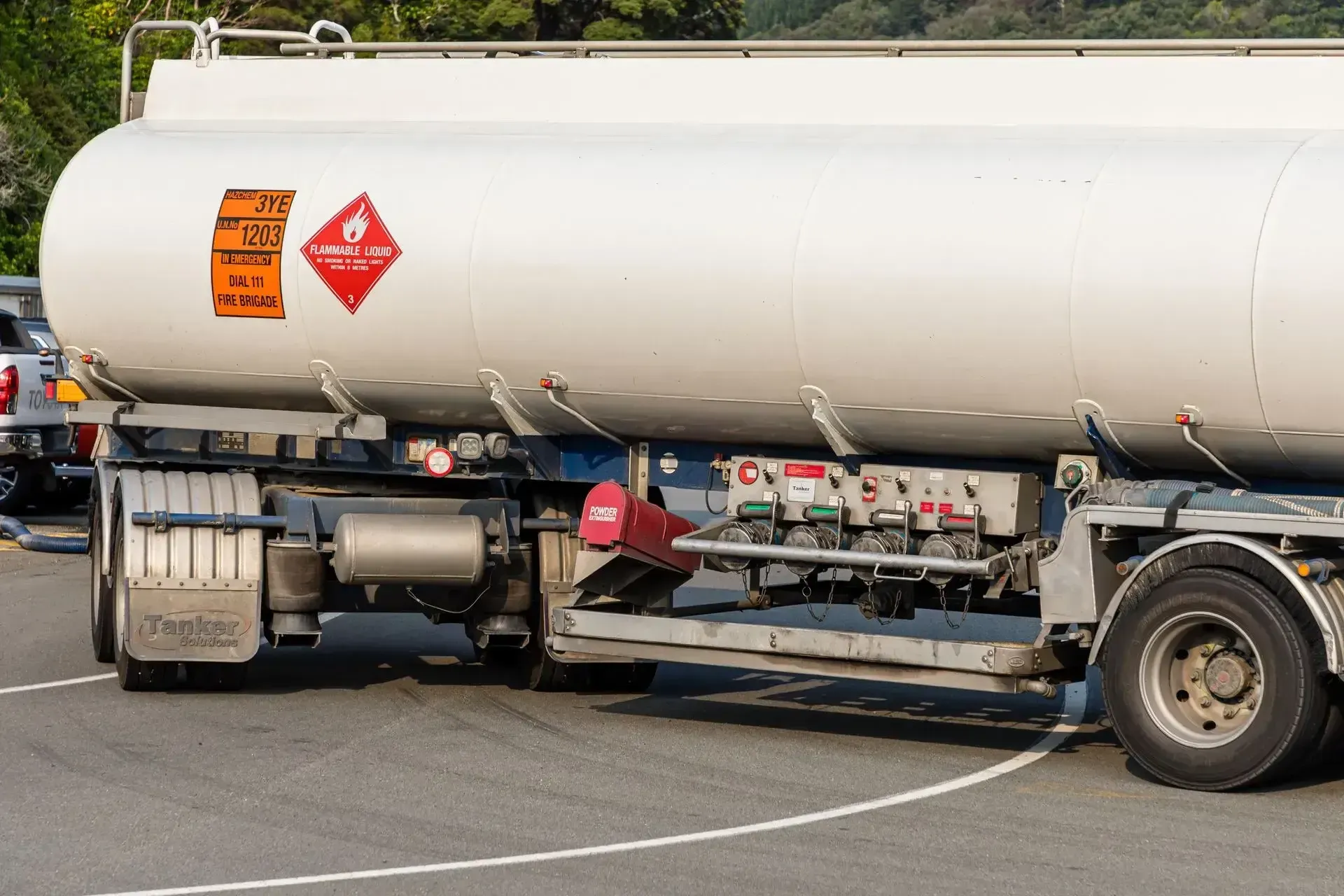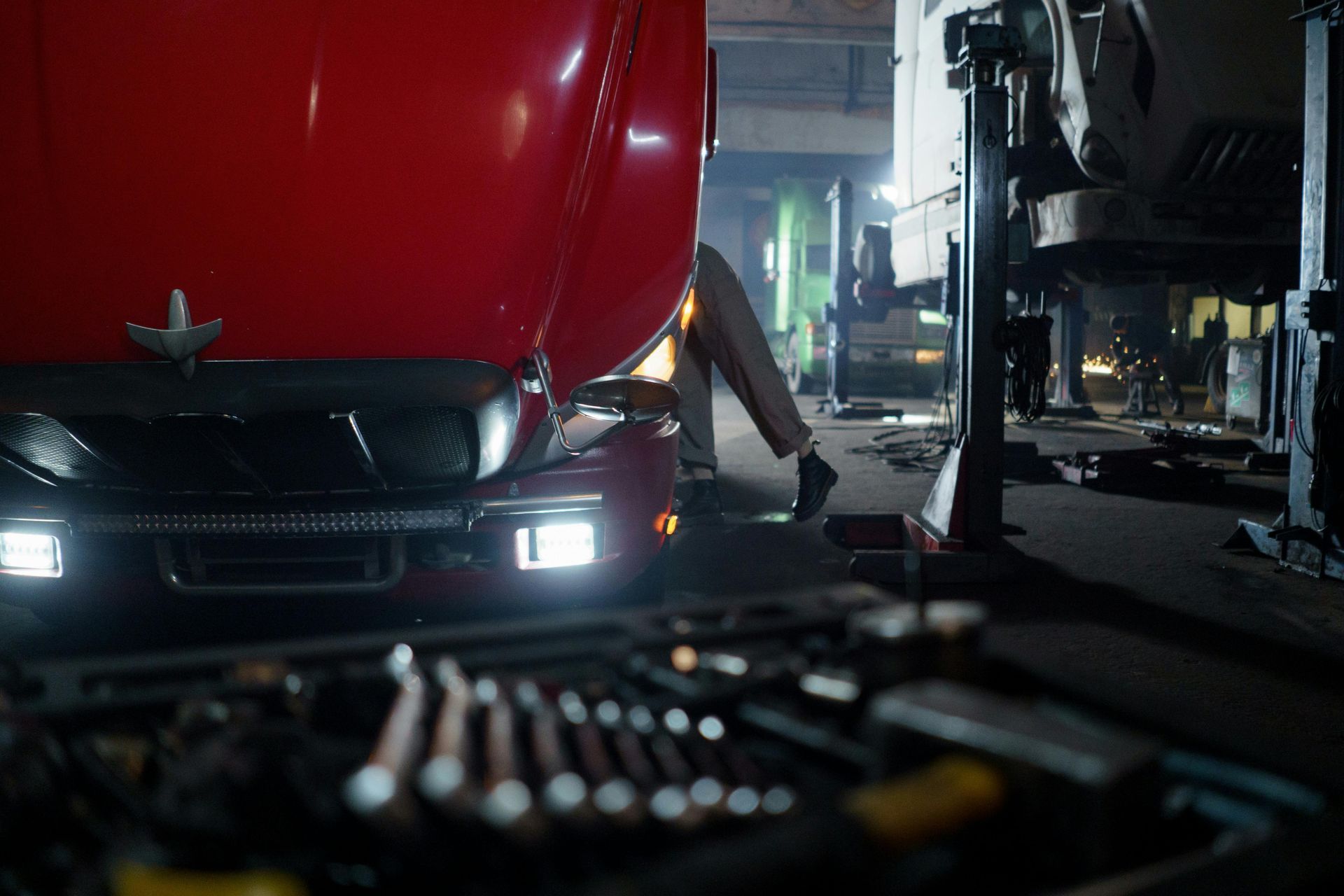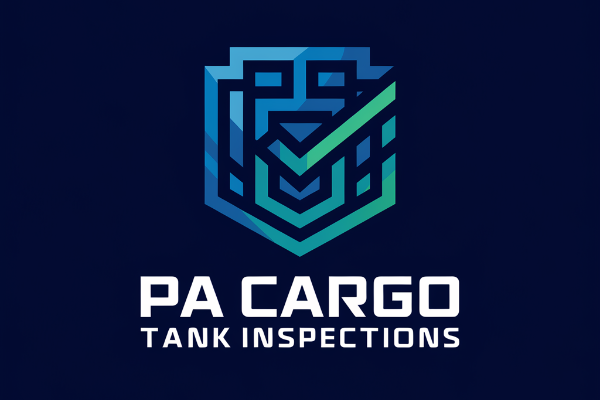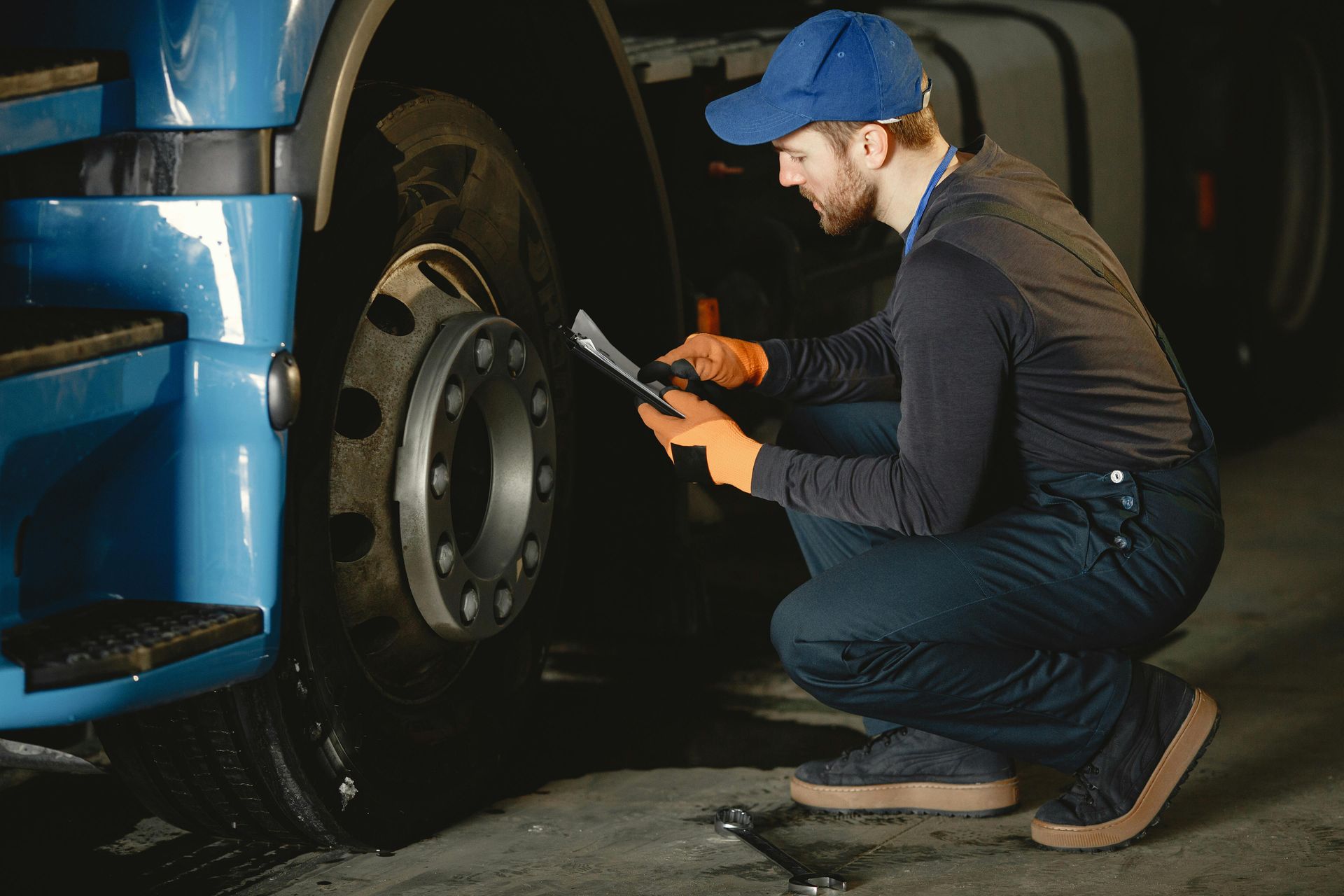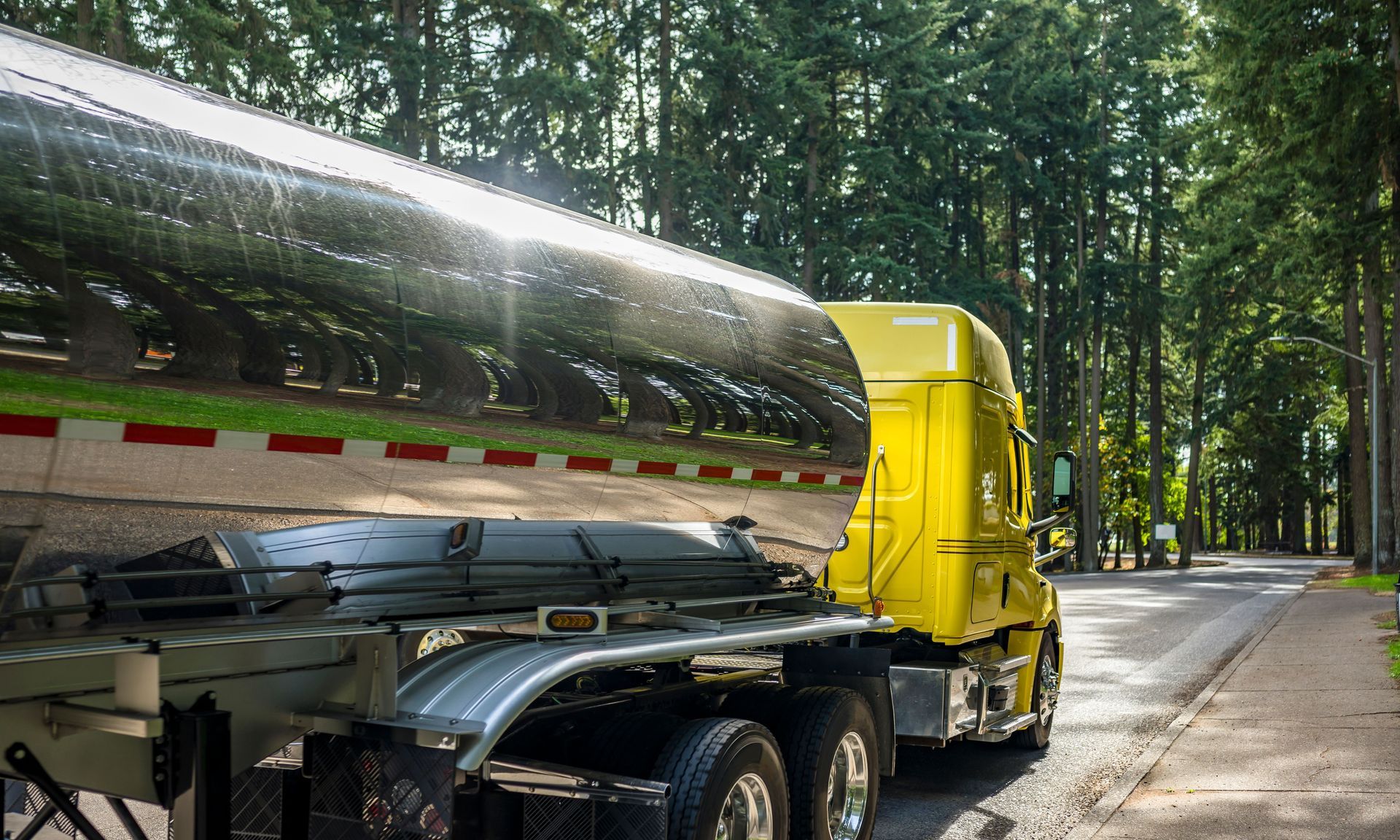February 20, 2025
What is an Annual DOT Inspection? An Annual DOT Inspection is a mandatory inspection that all commercial motor vehicles (CMVs) must undergo once every 12 months. It is conducted to ensure that your vehicle adheres to safety standards set by the Federal Motor Carrier Safety Administration (FMCSA). The DOT inspection looks at various vehicle components, from brakes to windshields, and checks whether they meet the required specifications for safe operation on public roads. Pa Cargo Tank Inspections specializes in these inspections, making sure your cargo tank vehicles are thoroughly checked for compliance with FMCSA regulations and Department of Transportation (DOT) standards. Why is an Annual DOT Inspection Important? The Annual DOT Inspection is not just a bureaucratic hurdle; it’s a critical step in ensuring the safety of both drivers and other road users. Here's why it’s so important: Safety: Regular inspections help identify and fix potential safety hazards, such as faulty brakes or worn-out tires, before they become serious problems on the road. Legal Compliance: The FMCSA requires that all commercial vehicles pass the annual inspection. Failing to comply could result in fines, penalties, and even the inability to operate your vehicle legally. Preventive Maintenance: By keeping your truck and trailer in top condition, you're preventing major mechanical breakdowns that could cause accidents or costly repairs down the line. How Does the DOT Vehicle Inspection Work? The DOT vehicle inspection is a comprehensive process that involves examining every major component of the vehicle. From the brake system to the windshield wipers, each part is carefully inspected by a qualified DOT inspector. Inspection Checklist The inspection covers the following key components: Brakes: Both the service and parking brake systems are checked to ensure they’re operating efficiently. Tires and Wheels: Inspectors check for proper inflation, wear, and any damage. Lights and Reflectors: All lights, including headlights, tail lights, and turn signals, are examined. Suspension: The suspension system is inspected for defects or wear that could affect handling or safety. Windshield: A cracked or damaged windshield is a serious safety issue, so it's thoroughly checked. Windshield Wipers: Functionality is crucial, especially for visibility during adverse weather conditions. Vehicle Identification Number (VIN): This ensures the vehicle is correctly registered and identifiable. DOT Inspection Process: What to Expect When it comes to DOT inspections, preparation is key. Here’s an overview of the inspection process: Pre-Inspection: Ensure your vehicle is clean and ready for inspection. The inspector will start by examining your inspection records to ensure you’re in compliance with all regulations. Inspection Procedure: The inspector will go over the checklist, examining each of the vehicle’s components. They’ll check the brake system, antilock brake system, automatic brake adjusters, and vacuum systems. Final Report: Once the inspection is complete, the inspector will provide a vehicle inspection report, detailing whether the vehicle passed or failed. If the vehicle fails, it will be necessary to repair the faulty components before re-inspection. How to Prepare for Your Annual DOT Vehicle Inspection At Pa Cargo Tank Inspections, we understand that the dreaded DOT inspection can seem stressful. However, with the right preparation, you can breeze through it. Here are a few tips: Ensure Your Vehicle is Clean and Organized: A tidy vehicle is easier to inspect. Remove any clutter that may hinder the inspection process. Check All Components: Before your inspection, ensure that all critical vehicle components are functioning properly, such as brakes, lights, and windshield wipers. Have Your Documentation Ready: Make sure you have all necessary documentation, including your previous inspection reports and registration details. Consult with a Qualified Inspector: If you’re unsure about the condition of certain vehicle components, it’s a good idea to get a pre-inspection from a qualified mechanic. Different Levels of DOT Truck Inspections Not all DOT inspections are the same. There are several levels, each focusing on different aspects of vehicle safety. The most common levels include: Level 1: This is a full inspection, covering all vehicle components. Level 2: This is a walk-around inspection, where the inspector checks the vehicle's components without getting under it. Level 3: This inspection is primarily focused on driver credentials, logs, and hours of service. Level 4: This is a special inspection that focuses on a specific issue, like a defect. Level 5: This is a comprehensive inspection done on the vehicle's mechanical and technical aspects, often involving a deeper dive into the system. Common Issues Found During DOT Inspections Some common problems that may cause a vehicle to fail the annual DOT inspection include: Faulty Brake System: This is one of the most common issues, as brakes are vital to vehicle safety. Worn-Out Tires: Tires with insufficient tread or improper inflation can be a hazard on the road. Non-Functioning Lights: A burned-out light bulb might seem insignificant, but it can be a safety risk. Damaged Windshield: Cracks or chips in the windshield can impair visibility, which is especially dangerous during poor weather conditions. How to Ensure Your Vehicle Passes the Annual DOT Inspection To pass the annual DOT vehicle inspection, it’s essential to stay proactive about maintenance. Regularly check your vehicle components, and ensure you are following the FMCSA regulations. If you’re unsure about the status of your vehicle, a pre-inspection from a qualified mechanic can help you identify and fix issues before the official inspection. The Importance of Keeping Inspection Records DOT inspections are not a one-time deal. They’re a regular part of operating a commercial vehicle, and maintaining a proper inspection record is crucial. Keeping detailed records helps ensure that your vehicle stays compliant with the FMCSA and DOT regulations. It can also make the inspection process smoother and quicker, as inspectors will have all the necessary information at hand. What Happens if You Fail the Annual DOT Inspection? If your vehicle fails the DOT vehicle inspection, don’t panic. The inspector will provide you with a list of the issues that need to be fixed. You’ll need to have these repairs done, and then you can schedule a re-inspection. Failing to pass the DOT inspection could lead to your vehicle being taken off the road until it’s compliant, which can affect your business’s operations. The Role of the DOT Inspector A DOT inspector plays a critical role in ensuring that your vehicle meets all required safety standards. These professionals are specially trained to inspect every aspect of your vehicle, from the engine to the tires, and assess whether it complies with FMCSA regulations. Their goal is to ensure that the vehicle is operating in a safe and efficient manner, reducing the risk of accidents on the road. The DOT inspector is qualified to identify defective components that may go unnoticed by untrained eyes. Whether it’s an issue with the antilock brake system or a worn-out brake pad, a qualified inspector knows exactly where to look and how to detect hidden issues that could compromise the vehicle’s performance and safety. They will also assess the truck and trailer to verify that all vehicle components, including the parking brake system, electrical systems, and vacuum systems, are functioning correctly. Inspection Criteria: What DOT Inspections Look For The DOT inspection criteria are comprehensive and detailed. Inspectors check a wide range of vehicle components during the annual inspection, including: Brakes: The inspector will check for any signs of wear or damage to the service brakes, automatic brake adjusters, and vacuum systems. The brake system is one of the most critical components of any vehicle, and a malfunctioning brake system can be deadly. Lights: Proper functioning of all lights, including headlights, brake lights, and turn signals, is essential for road safety. The inspector ensures that all the lights are bright and functioning properly, allowing the driver to be visible to other vehicles on the road. Windshield and Wipers: The windshield must be free of cracks, chips, or any damage that could impair visibility. Windshield wipers should work smoothly to ensure that the driver has clear visibility, especially during adverse weather conditions. Suspension: A vehicle's suspension system absorbs shocks and helps maintain proper tire contact with the road. A faulty suspension can result in an uncomfortable ride and increased wear on the tires, leading to accidents. Tires and Wheels: Inspectors look for any signs of tire wear or damage, ensuring that the tires are properly inflated and have sufficient tread depth to ensure traction on the road. Leaks: Inspectors also check for any signs of leaks in the fuel system, brake lines, or hydraulic systems. Conclusion At Pa Cargo Tank Inspections, we are committed to helping you keep your cargo tank motor vehicles safe and compliant. Our experienced DOT inspectors ensure that your vehicle inspection is thorough, accurate, and efficient. With our professional assistance, you can navigate the annual DOT inspection process with ease and avoid any unwanted surprises. We provide comprehensive inspections and the necessary documentation, ensuring your vehicle is safe for the road and fully compliant with all FMCSA regulations. FAQs Q: How long does an Annual DOT inspection take? A: The annual DOT inspection usually takes around 1-2 hours, depending on the size and condition of the vehicle. Q: What happens if my vehicle fails the inspection? A: If your vehicle fails the inspection, you'll need to make the necessary repairs and schedule a re-inspection to pass the DOT standards. Q: How can I prepare my truck for the DOT inspection? A: To prepare, ensure that all major components such as brakes, lights, windshield, and tires are in good working condition. Also, keep your inspection records ready. Q: Is it mandatory for all commercial vehicles to undergo an Annual DOT inspection? A: Yes, according to FMCSA regulations, all commercial vehicles must undergo an annual DOT inspection to ensure road safety and compliance. Q: Can I perform a DOT inspection on my own? A: While you can perform some basic checks, only a qualified DOT inspector is authorized to conduct a formal DOT vehicle inspection and provide the necessary certification.

